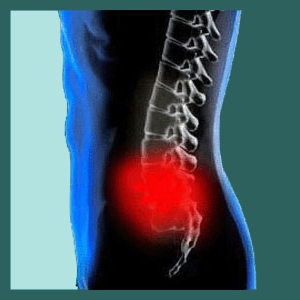
Bilateral sacroiliac pain affects both legs simultaneously. Bilateral pain might develop spontaneously or might spread from one leg to both over time. Although any sacroiliac joint problem can be very painful and debilitating, suffering symptoms in both legs are known for being an incredibly physically limiting and problematic condition.
Bilateral pain is fortunately much less common than unilateral sacroiliac joint pain problems. However, we observe evidence that many patients with unilateral pain will eventually develop bilateral pain, with both legs being symptomatic at once or the secondary leg becoming symptomatic following successful treatment of the initially painful joint.
This dissertation examines sacroiliac joint pain syndromes that exist on both sides of the body. We will contrast these bilateral pain conditions against unilateral sacroiliac joint pain and detail why pain in one leg tends to move to both in select patient profiles.
Bilateral Sacroiliac Pain Profiles
There are 2 different types of bilateral pain profiles that we commonly see in clinical practice. The first describes a condition wherein the patient develops pain in both sacroiliac joints simultaneously or within a short time after developing a primary unilateral expression of pain. This type of pain condition is the least often seen and usually is related to the most significant sources of sacroiliac symptoms, including traumatic injury, autoimmune disease and infection.
The more common form of bilateral sacroiliac joint symptoms might be better described as migrating unilateral pain, since it exists primarily in one side, is usually successfully treated, but migrates to the other side at some point in the future. Alternately, in select cases, the original side is not successfully treated and continues to exist when the second symptomatic side commences presentation of pain.
Bilateral SIJ Pain From Unilateral Pain
Why would pain migrate from one side of the sacroiliac to the other? This is a commonly seen phenomenon in both successfully treated and unsuccessfully treated patients. There are several logical explanations for this occurrence:
A compromised sacroiliac joint will cause the other side to bear an inordinate percentage of stress in order for the patient to maintain functionality. This added stress can accelerate degeneration of the other SI joint, as well as increase the chance of suffering acute injury or RSI condition.
A compromised SI joint can affect posture and gait, increasing the chances of suffering additional collateral pain conditions from these anatomical alterations.
Many sacroiliac conditions are misdiagnosed and are actually caused by other structural issues in the lumbar spine, postural muscles or hip joint. These conditions might therefore affect one or both legs in similar reasons to the functional consequences detailed above. Likewise, misdiagnosed SIJ concerns might actually be psychogenic pain syndromes, which demonstrate a propensity for migrating in response to treatment.
Bilateral Sacroiliac Pain Consequences
Patients who suffer simultaneous pain in both SI joints have a greater chance of suffering marked functional limitations and even total disability. Many of these patients can not walk well, if at all. Some can not even stand due to the pain or due to structural instability of the joints. Of course, not all cases are this dire, with a great number of patients merely suffering chronic discomfort in both joints to various degrees.
Patients with severe bilateral sacroiliac pain are statistically more disposed towards surgical treatment, as well as earlier surgical treatment in the symptomatic timeline. Patients who are successfully treated for unilateral sacroiliac pain often have a more difficult time finding lasting relief from migrated symptomology.
Finally, bilateral sacroiliac joint pain that is caused by a systemic issue, such as autoimmune disease (rheumatoid arthritis or ankylosing spondylitis), has a greater chance of spreading to other anatomical joints, as well. The spine, hip, knee and virtually all major joints of the body might become targets, which is why it is so crucial for these patients to receive care from a specialist in their particular disease process.
Sacroiliac Joint Pain > Sacroiliac Pain > Bilateral Sacroiliac Pain





